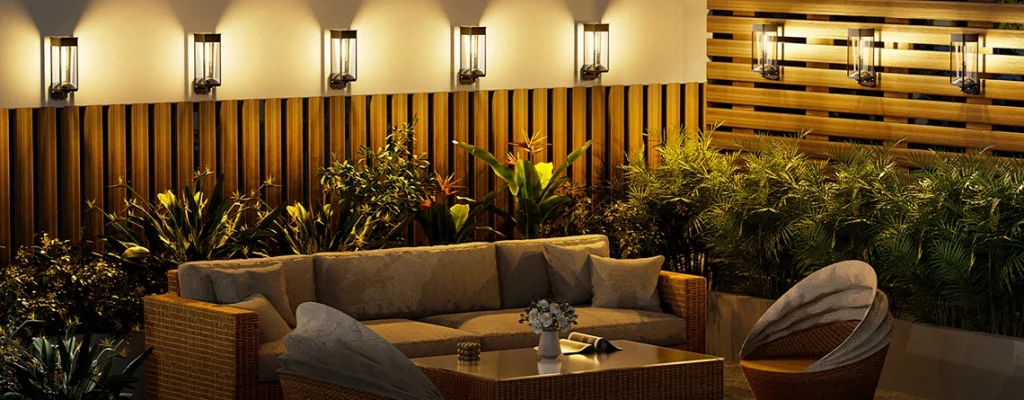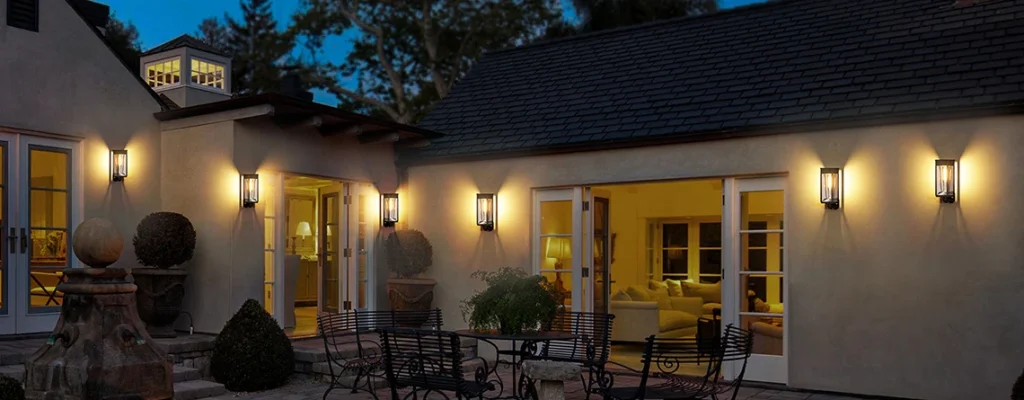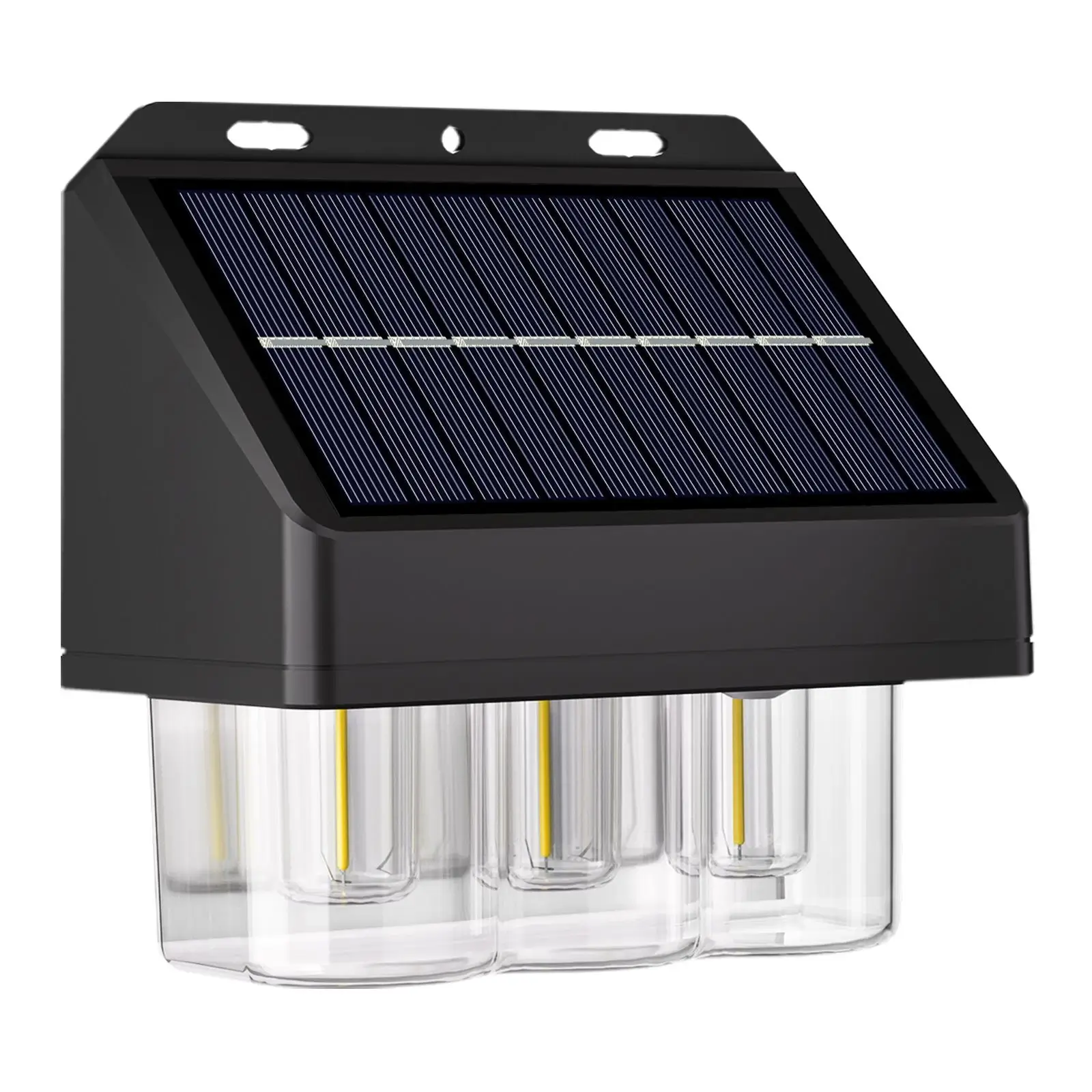Solar outdoor wall lights are an eco-friendly, cost-effective way to illuminate your home’s exterior, enhancing both outdoor aesthetics and security lighting. With no wiring required, these lights harness solar energy to provide energy-efficient lighting for pathways, patios, or entryways. This guide offers practical advice on selecting the right solar wall lights, considering brightness levels, design aesthetics, and installation requirements to meet your specific needs.

Why Choose Solar Outdoor Wall Lights?
Solar-powered lighting eliminates electricity costs and reduces your carbon footprint, making it a sustainable choice for homeowners. Advances in LED technology and solar panel efficiency ensure bright, reliable illumination, even in low-sunlight conditions. Whether you’re aiming for ambient outdoor lighting, home security, or decorative garden lighting, solar wall lights offer versatility and ease of use. Understanding key factors like lumen output, durability, and installation ease will help you choose the perfect model.
Key Factors to Consider
1. Brightness and Lumen Output
Lumen output determines how bright your solar wall lights will be, which is critical for their intended purpose. For security lighting, aim for 200–800 lumens to illuminate large areas like driveways or entrances. For ambient lighting, 50–200 lumens creates a warm, inviting glow for patios or garden walls. A user on a home improvement forum noted that a 400-lumen solar LED light was ideal for their backyard, balancing brightness with energy conservation.
Consider models with adjustable brightness settings to customize illumination. Bitpott’s solar wall light, for instance, offers multiple modes, allowing users to switch between high-lumen security modes and softer ambient modes based on need.
2. Battery Life and Solar Panel Efficiency
The battery life of solar outdoor wall lights affects their runtime, especially during cloudy days or winter months. Look for lights with lithium-ion batteries (typically 2000–4000 mAh) for 8–12 hours of illumination. Monocrystalline solar panels, which have a solar efficiency of 15–21%, charge more effectively than polycrystalline panels, ensuring consistent performance. A reviewer on Amazon praised a high-efficiency solar panel on their light, which maintained long-lasting battery life even in overcast conditions.
Check the solar charging time—most lights require 6–8 hours of direct sunlight. If you live in a region with limited sun, opt for models with larger solar batteries or detachable panels for flexible placement.
3. Durability and Weather Resistance
Since solar wall lights are exposed to the elements, durability in outdoor conditions is essential. Choose lights with an IP65 rating or higher for waterproof performance against rain, snow, and dust. Aluminum casings or polycarbonate bodies offer superior resistance to corrosion, especially in coastal areas. A landscaping blog highlighted that IP66-rated lights, like those from Bitpott, withstood heavy storms without issues, ensuring long-term reliability.
Users also recommend checking the LED lifespan, typically 20,000–50,000 hours, to ensure low maintenance over time.
4. Design and Aesthetics
The design aesthetics of solar outdoor wall lights should complement your home’s exterior. Modern designs with sleek, minimalist lines suit contemporary homes, while lantern-style lights enhance traditional outdoor decor. A reviewer on The Home Depot’s website appreciated the stainless steel finish of their light, which blended seamlessly with their modern patio.
Consider the light color temperature—warm white LEDs (2700–3000K) create a cozy ambiance, while cool white LEDs (4000–5000K) provide crisp, bright illumination for security purposes. Adjustable light direction is another feature to look for, allowing you to focus the beam where needed.
5. Motion Sensors and Smart Features
Motion-activated solar lights are ideal for home security, activating only when movement is detected, which conserves battery life. Look for sensors with a 10–26-foot detection range and adjustable sensitivity to avoid false triggers. A Reddit user shared that their motion sensor light reduced energy use by staying dim until motion was detected, making it both energy-efficient and effective for deterring intruders.
Some models offer remote control or smart features, like timers or app connectivity, for added convenience. These are particularly useful for customizable outdoor lighting, allowing you to adjust settings without climbing a ladder.
6. Installation Requirements
Easy installation is a hallmark of solar wall lights, requiring no electrical wiring. Most models come with mounting hardware (screws, brackets, or adhesive pads) for quick setup on walls, fences, or posts. Ensure the solar panel can be placed in an area with maximum sunlight exposure, ideally south-facing in the Northern Hemisphere. A YouTube tutorial emphasized measuring the cable length for models with detachable panels to avoid placement issues.
For tricky surfaces like vinyl siding, opt for adhesive mounts to avoid drilling. Check the product manual for specific installation requirements, such as wall type or mounting height (typically 6–8 feet for optimal light coverage).

Top Considerations for Specific Needs
For Security Lighting
If home security is your priority, choose high-lumen solar lights (400–800 lumens) with motion sensors. Models like the Aootek 800-lumen light, praised on Amazon for its wide-angle motion detection, are ideal for driveways or entryways. Ensure the light has an IP65 rating for weather resistance and a robust battery for consistent nighttime performance.
For Ambient Lighting
For a cozy, inviting atmosphere, select solar wall lights with 50–200 lumens and warm white LEDs. Philips’ solar lights, noted in a gardening blog, offer elegant designs for patio lighting or garden walls. Look for dusk-to-dawn sensors to automate operation and enhance outdoor ambiance.
For Small Spaces
In compact areas like balconies or small patios, opt for low-profile solar lights with adjustable brightness. URPOWER’s 120-lumen light, highlighted in user reviews, is compact yet effective for small outdoor spaces. Adhesive mounting simplifies installation in tight areas.
For Harsh Climates
In regions with extreme weather, prioritize IP66-rated lights with durable materials like aluminum or polycarbonate. Bitpott’s solar wall light was praised by a coastal homeowner for its corrosion resistance, making it suitable for humid or salty environments.
Evaluating User Feedback
User reviews provide valuable insights into real-world performance. On Reddit, a homeowner shared that their solar LED wall light maintained brightness through a rainy season, thanks to its IP65 rating and high-capacity battery. However, some users noted that budget models often exaggerate lumen output, recommending trusted brands for accurate specifications. Checking customer reviews on platforms like Amazon or The Home Depot can help verify solar light performance and durability.
Budget Considerations
Solar outdoor wall lights range from $20 to $100, depending on features. Budget models (e.g., URPOWER) offer cost-effective lighting for basic needs, while premium options (e.g., Bitpott or Philips) provide advanced features like remote control and high-efficiency panels. A reviewer on a tech blog advised balancing cost with quality, as cheaper lights may lack weatherproof durability or long-lasting batteries.
Maintenance Tips for Longevity
To maximize the lifespan of your solar wall lights:
- Clean the Solar Panel: Wipe the panel monthly with a soft cloth and mild detergent to ensure optimal solar charging.
- Check Battery Health: Replace lithium-ion batteries every 2–3 years if performance declines.
- Inspect Weather Seals: Verify the IP rating remains effective by checking for cracks or wear after storms.
- Adjust Positioning: Reposition the solar panel seasonally to capture optimal sunlight, especially in winter.
Environmental and Cost Benefits
Solar-powered lighting reduces energy consumption and eliminates wiring costs, making it an eco-friendly lighting solution. High-quality solar wall lights require minimal maintenance and offer long-term savings, with LED bulbs lasting up to 50,000 hours. By choosing energy-efficient solar lights, you contribute to a sustainable future while enhancing your outdoor space.
Conclusion
Choosing the right solar outdoor wall lights involves balancing brightness levels, design aesthetics, and installation requirements to suit your home’s needs. Whether you prioritize security lighting, ambient glow, or easy installation, options like Bitpott’s versatile models offer reliable performance and durability. Evaluate lumen output, battery life, weather resistance, and smart features to find the perfect fit. With the right solar wall lights, you can create a beautifully lit, energy-efficient exterior that enhances both safety and style.

Comments